

12th May 2025 (12 Topics)
Mains Issues
Context
India and the European Union (EU) commenced the 11th round of negotiations for a proposed Free Trade Agreement (FTA). The negotiations come after a significant pause and are part of a broader strategy to adapt to the evolving global trade landscape.
Background
- In 2022, India and the 27-nation EU bloc resumed negotiations after a gap of over eight years. It was stalled in 2013 due to differences over the level of opening up of the markets.
- The India-EU trade pact negotiations cover 23 policy areas or chapters, including Trade in Goods, Trade in Services, Investment, Sanitary and Phytosanitary Measures, Technical Barriers to Trade, Trade Remedies, Rules of Origin, Customs and Trade Facilitation, Competition, Trade Defence, Government Procurement, Dispute Settlement, Intellectual Property Rights, Geographical Indications, and Sustainable Development.
- In a related development, India and the United Kingdom recently announced the conclusion of their own free trade agreement negotiations.
Current Trade Dynamics
- The European Union is India’s largest trading partner, meanwhile, India is the EU’s ninth largest trading partner.
- As of the fiscal year 2023-24, India’s bilateral trade in goods with the EU reached approximately USD 137.41 billion, making the EU India’s largest trading partner.
- Indian exports to the EU totaled USD 75.92 billion, while imports stood at USD 61.48 billion.
- The EU accounts for about 17% of India’s total exports, while India represents around 9% of total EU exports.
What is a Free Trade Agreement?
|

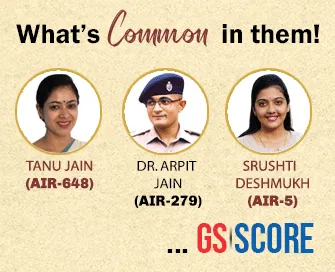
Mains Issues
Context
Despite various policy efforts to promote crop diversification, rice and wheat continue to dominate Indian agriculture across regions, including Punjab, Madhya Pradesh, Telangana, and even parts of Eastern India like Uttar Pradesh and Chhattisgarh. This pattern is not incidental. It is shaped by a combination of price support, yield reliability, irrigation access, and continuous technological advancements.
Why India opts for rice and wheat?
- In India, agriculture is not just an economic activity but also a high-risk livelihood—subject to: unpredictable monsoons, input cost volatility (fertilisers, labour), market price crashes and crop failure due to pests or weather.
- In such a risky environment, farmers naturally prefer crops that give them: assured prices, stable yields, government procurement support, low probability of complete crop loss
- This is where rice and wheat fit perfectly.
- Minimum Support Price (MSP) system: The biggest driver behind India’s rice and wheat dominance is the MSP system, backed by actual government procurement.
- The Food Corporation of India (FCI) and other agencies procure wheat and rice in bulk.
- Procurement is almost guaranteed, especially in states like Punjab, Haryana, Madhya Pradesh, and Telangana.
- Even if market prices crash, farmers get the pre-announced MSP, which acts like an insurance cover.
- Irrigation Advantage + Low Yield Risk: Rice and wheat are extensively grown under irrigated conditions, which reduces dependence on rainfall.
- Wheat is a rabi (winter) crop; irrigation helps during dry spells.
- Rice traditionally requires a lot of water, but is supported by canal irrigation in states like Punjab or by groundwater pumping in Telangana.
- Because of this, these two crops have less chance of total failure. They are more fertiliser-responsive and have predictable outcomes.
- R&D Breakthroughs: The Green Revolution made India self-sufficient in food grains — and its gains have been heavily concentrated in rice and wheat.
- Wheat: First-generation wheat varieties like Kalyan Sona, newer wheat varieties (e.g., HD-3385)
- Rice: Semi-dwarf, fast-growing varieties (e.g., IR-8, Samba Mahsuri). New gene-edited varieties like Kamala and Pusa DST Rice 1 developed using CRISPR-Cas9 technology
What’s happening to other crops?
- Crops like cotton have not seen any major breeding breakthroughs after Bt cotton (2002–2006).
- The lack of approval for new GM crops (e.g., in mustard, brinjal, etc.) further limits productivity gains in other sectors.
- This absence of innovation, coupled with weak procurement systems, makes pulses, oilseeds, and millets less economically attractive, despite their nutritional and ecological importance.
- Crops like millets, pulses, or oilseeds may be more suited to India’s agro-climate, especially in rainfed areas, but:
- Their price realisations are unstable.
- They don’t enjoy mass procurement or assured markets.
- They face higher yield risk due to less irrigation and poor research attention.
Required Measures
- To correct this imbalance, there is a need to:
- Extend R&D support to other crops.
- Build robust procurement systems for pulses and oilseeds.
- Encourage climate-resilient and water-saving practices (e.g., direct seeding in rice, conservation agriculture in pulses).
- Promote nutri-cereals like millets, especially under the National Food Security Mission and International Year of Millets 2023 legacy.
- Regions beyond the South, such as Eastern Uttar Pradesh, Bihar, Jharkhand, and parts of Central India, also offer untapped potential for diversified cropping if supported by infrastructure, irrigation, and market access.
Wheat Crop
Rice Crop
|

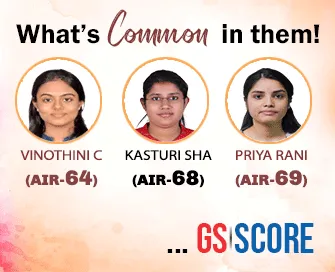
Mains Issues
Context
India and Pakistan decided to stop firing and military action on land and in the air. The DGMO (Director General of Military Operations) of Pakistan called DGMO of India and it was agreed between them that both sides would stop all firing and military action.
Who are the DGMOs?
- The Director General of Military Operations (DGMO) is a senior officer in the Indian Army, typically of the rank of Lieutenant General.
- The DGMO is responsible for planning, directing, and overseeing military operations, including combat, counter-insurgency, and border security.
- The DGMO operates at the strategic-operational level and reports directly to the Chief of the Army Staff (COAS).
- DGMO-level talks are a military-to-military channel of communication used during times of:
- Ceasefire violations
- Cross-border infiltrations
- High-intensity conflict periods
- They serve as technical and professional mechanisms to prevent escalation, even during political breakdowns in dialogue.
- Current DGMO (2025): Lieutenant General Rajiv Ghai
Role of the DGMO (Key-functions)
- Operational Planning: DGMO formulates strategies for combat operations, counter-insurgency, border management, and peacekeeping missions. He integrates intelligence into operational plans by liaising with defense intelligence agencies.
- Border Management: He oversees Line of Control (LoC), International Border (IB), and other sensitive areas. He coordinates troop deployments and responses to ceasefire violations or cross-border attacks.
- Conflict De-escalation: He acts as the point of direct communication with foreign counterparts (especially Pakistan). He engages in hotline conversations to clarify intent, prevent misunderstandings, and reduce tensions.
- Joint Operations: He coordinates with Air Force and Navy operations for inter-service synergy. He ensures joint planning during major military exercises or real-time operations.
- Policy Communication: He updates the Ministry of Defence and Chief of Army Staff on operational developments. Also, he advises national leadership on military options and preparedness levels.
|
Why DGMOs are the “Go-To” Officers during Tension |
|
|
Factor |
Explanation |
|
Institutional Trust |
DGMOs maintain professional, apolitical rapport across borders. |
|
Quick Decision-Making |
They can authoritatively convey military intent and take real-time calls. |
|
Access to Leadership |
DGMO reports directly to the Army Chief, facilitating swift policy-level communication. |
|
Continuity of Engagement |
Even when political ties break down, DGMO talks usually continue uninterrupted. |


Prelims Articles
Context
India has made it clear that it does not want anyone to mediate when it comes to Kashmir. This comes as US President Donald Trump offered to mediate between India and Pakistan on the long-standing Kashmir dispute.
What is the Kashmir issue?
- Under the partition plan provided by the Indian Independence Act, Muslim-majority Kashmir was free to accede to either India or Pakistan.
- The maharaja (local ruler), Hari Singh, initially wanted Kashmir to become independent - but in October 1947 chose to join India, in return for its help against an invasion of tribesmen from Pakistan.
- A war erupted and India asked the United Nations to intervene. The UN recommended holding a plebiscite to settle the question of whether the state would join India or Pakistan. However, the two countries could not agree to a deal to demilitarise the region before the referendum could be held.
- Pakistan occupies the western part of Kashmir (Azad Kashmir, Gilgit and Baltistan)
- India administers the southern and southeastern parts (Kashmir Valley, Srinagar, as well as Jammu and Ladakh)
- China holding two thin slices of Kashmir’s north
- India claims all of Kashmir, while Pakistan also claims the part that India holds but not what China, its ally, holds.
- In July 1949, India and Pakistan signed an agreement to establish a ceasefire line as recommended by the UN and the region became divided.
- A second war followed in 1965. Then in 1999, India fought a brief but bitter conflict with Pakistani-backed forces.
- By that time, India and Pakistan were declared nuclear powers. Today, Delhi and Islamabad both claim Kashmir in full, but control only parts of it.
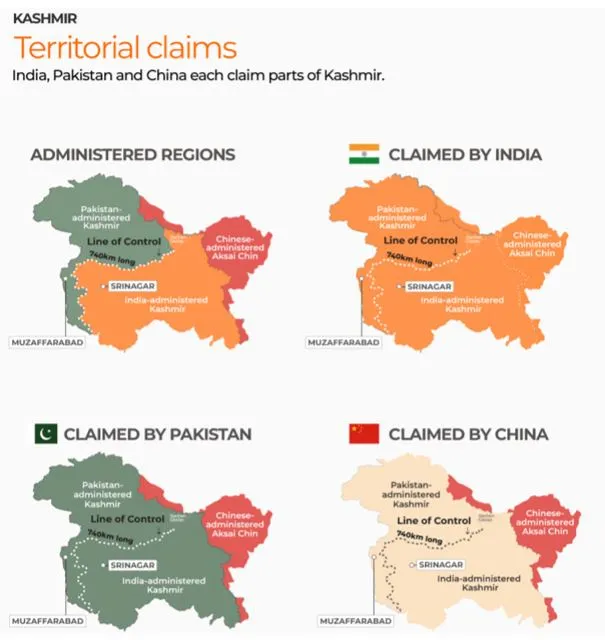
What is India’s position?
- Both India and Pakistan claim Kashmir, but each controls a part of it — with China also administering a chunk of northern Kashmir.
- India is clear. It wants Pakistan-Occupied Kashmir (PoK) back.


Prelims Articles
Context
New data from the Sample Registration System (SRS) 2021 has revealed that fertility rates in South India have fallen more sharply than previously estimated. All five southern states—Tamil Nadu, Kerala, Andhra Pradesh, Telangana, and Karnataka—now report Total Fertility Rates (TFRs) between 1.5 and 1.6, which is significantly below the replacement level of 2.1.
Key-findings
- India’s Overall Fertility Rate has declined below replacement level. The Total Fertility Rate (TFR) for India as a whole is 2.0, as per SRS 2021.
- This is below the replacement level of 1, which is the average number of children per woman needed to maintain the population without migration.
- South India Shows Steepest Decline in Fertility: All five southern states—Tamil Nadu, Kerala, Andhra Pradesh, Telangana, and Karnataka—now report TFRs between 1.5 and 1.6. This marks a sharp drop compared to the previous National Family Health Survey (NFHS-5) data.
- Tamil Nadu and Kerala: 1.5 (down from 1.8)
- Andhra Pradesh: 1.5 (down from 1.7)
- Telangana: 1.6 (down from 1.82)
- Karnataka: 1.6 (down from 1.7)
- Northern and Central States Continue to Have Higher Fertility Rates: Fertility remains significantly above replacement level in several large states:
- Bihar: Highest TFR at 3.0
- Uttar Pradesh: 2.7
- Madhya Pradesh: 2.6
- Rajasthan: 2.4
- Jharkhand: 2.3
- These figures show that India’s demographic landscape is deeply regionalized, with differing rates of fertility decline.
- Crude Birth Rates (CBRs) Reveal Stark Regional Divide: CBR measures the number of births per 1,000 people annually.
- Northern and central states continue to record high CBRs :
- Bihar: 6
- Uttar Pradesh: 8
- Madhya Pradesh: 8
- In contrast, southern states show much lower CBRs:
- Kerala: 9
- Tamil Nadu: 4
- Karnataka: 2
- Northern and central states continue to record high CBRs :
Global Comparison
- Countries like Japan, South Korea, and many European nations are already dealing with ultra-low fertility rates (as low as 0.8–1.3) and population decline. But there's a major difference:
- These countries became rich before ageing.
- Indian states, especially in the South, are ageing before becoming rich — a challenge called "ageing before affluence".
What is Total Fertility Rate (TFR)?
|


Prelims Articles
Context
Pakistan fired its ballistic missile Fatah-II, an improved version of the Fatah-I system with better range and accuracy, but was successfully intercepted by the Indian defence system in Haryana's Sirsa.
What is a ballistic missile?
- A ballistic missile is a missile which uses projectile motion (something which moves in the air when launched, under the influence of gravity, with air resistance neglected) to hit the target.
- Most of the flight of these missiles are unpowered, as the weapons are powered only for short periods.
- There are two types of ballistic missiles –
- Short-range (SRBM), typically used during wars and satellites within the Earth's atmosphere
- larger ones have the capability to travel outside it
- ICBM (intercontinental ballistic missile) are the ballistic missiles with the greatest range, capable of full orbital flight.
- Types of ballistic missiles
- Tactical ballistic missile (TBM): Range less than 300 km
- Short-range ballistic missile (SRBM): Range from 300 to 1,000 kilometres (190 to 620 mi)
- Medium-range ballistic missile (MRBM): Range from 1,000 to 3,500 kilometres (620 to 2,170 mi)
- Intermediate-range ballistic missile (IRBM): Range from 3,500 to 5,500 kilometres (2,200 to 3,400 mi)
- Intercontinental ballistic missile (ICBM): Range greater than 5,500 kilometres (3,400 mi)
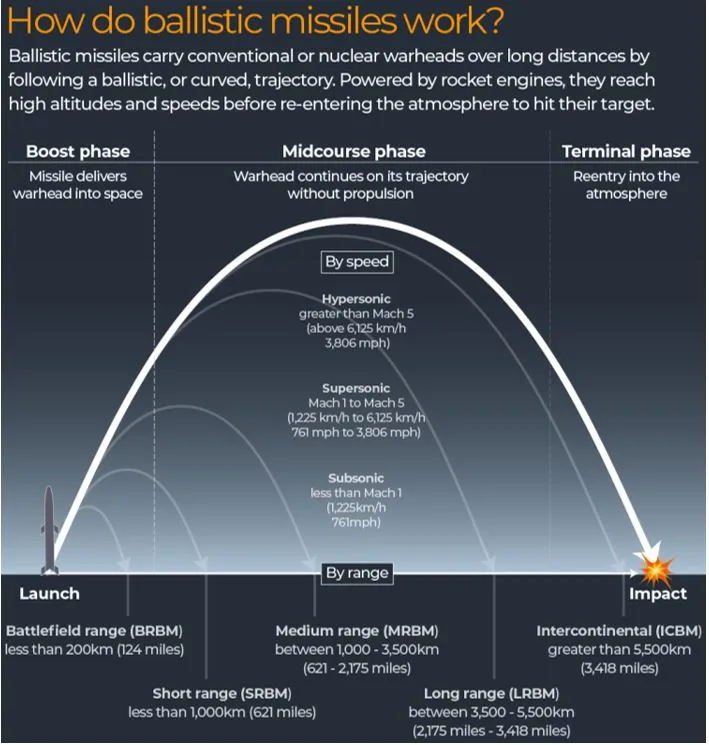
Fact Box: Fatah-II
|

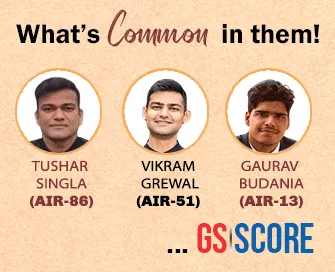
Prelims Articles
Context
The Indian Armed Forces reportedly used BrahMos for the first time in actual combat, as part of retaliatory precision strikes on Pakistani military infrastructure following the Pahalgam terrorist attack on April 22.
What is BrahMos?
- BrahMos is a powerful supersonic cruise missile made by India and Russia together.
- It is one of the fastest missiles in the world, flying at about three times the speed of sound (Mach 2.8 to 3.0).
- The name "BrahMos" comes from two rivers – Brahmaputra (India) and Moskva (Russia).
- Type: Cruise missile – It flies like an aircraft at low height and high speed to hit targets very accurately.
- Speed: Supersonic – around Mach 3, which is much faster than sound.
- Range: Initially 290 km, now extended to 400+ km, and even longer versions are being developed.
- ‘Fire and Forget’: Once launched, it finds and hits the target on its own, without needing control from the launcher.
- Versatile: It can be launched from:
- Land (army mobile launchers)
- Sea (warships)
- Air (fighter jets like Sukhoi-30)
- Submarine (underwater)
- Propulsion:
- First stage: Solid-propellant booster.
- Second stage: Liquid-fueled ramjet (air-breathing engine for supersonic speeds).
- Altitude: Cruise altitude up to 15 km; terminal flight path at just 10 metres, enabling stealth and evasion.
- Radar Signature: Very low RCS (Radar Cross Section) due to compact design and stealth materials.
Why is it important?
- It gives India the power to strike targets quickly, accurately, and from far away, without putting pilots or soldiers in direct danger.
- It works as a deterrent to enemies, showing India’s strong defence capability.
- It’s used by the Indian Army, Navy, and Air Force.
Major Variants
|


Prelims Articles
Context
Drone warfare is now transforming the way nations wage wars. During the recent India-Pakistan tensions, drones were employed to attack targets without deploying soldiers across the border. This method of warfare has been witnessed earlier -- in Ukraine, Israel, and elsewhere in the world.
What is Drone Warfare?
- Drone warfare refers to a mode of warfare employing unmanned or remotely controlled devices. Such drones have the capability of staying in the air, on land, at sea level, or underwater.
- The drones may be operated by manual control, and others may utilise auto-pilot systems on their missions.
- UAV (Unmanned Aerial Vehicle), is commonly known as a drone. It is the flying component of the RPAS, operated without a human pilot onboard.
- RPAS (Remotely Piloted Aircraft System) refers to a set of components that include the drone, its ground-based control system.
- Drone Advancements
- Earlier: Used mainly for surveillance and target acquisition (1960s–2000s)
- Now: Capable of autonomous navigation, AI targeting, swarming, and electronic warfare
- Examples:
- DJI Matrice 300: Used in Ukraine with AI for target locking
- Small, cheap drones are evading modern air defences better than large drones (e.g., Predator, Reaper)
Global Context
|


Prelims Articles
Context
Asteroid 2024 YR4 was recently identified as a near-Earth asteroid (NEO) with a small but notable probability of colliding with the Moon in December 2032. While it initially raised concerns about a possible impact with the Earth, newer and more refined observations by NASA and other agencies ruled out that threat. However, the possibility of it striking the Moon remains.
About
- Asteroid 2024 YR4 is estimated to be 65 meters wide — about the height of a 10-storey building.
- By comparison, the asteroid that wiped out the dinosaurs was about 10 kilometers wide.
- Though not big enough to trigger mass extinction, an asteroid of this size can cause significant damage — especially if it hits a populated area or a sensitive celestial body like the
- The asteroid is not classified as “Potentially Hazardous” by standard criteria, because such classification applies only to:
- Asteroids over 140 meters in size,
- Whose orbits come within 05 AU (astronomical units) of Earth’s orbit.
- However, smaller asteroids can still pose local to regional threats — as seen with the Chelyabinsk meteor that exploded over Russia in 2013, injuring over 1,000 people despite being just 20 meters wide.
- What If It Hits the Moon? If YR4 does strike the Moon:
- It will form a crater 500 to 2,000 meters wide — a relatively large impact on the lunar surface.
- The energy released would be equivalent to 340 times the Hiroshima atomic bomb.
- The Moon’s orbit will not change, because its mass is massive compared to YR4.
- There could be a visible flash, especially if the impact is on the side of the Moon visible from Earth.
- Tracking of such objects: Telescopes like ATLAS, Pan-STARRS, and NEOWISE scan the sky continuously.
- Tool for hazardous objects: The NASA Sentry system maintains a dynamic list of potentially hazardous objects, using tools like the Torino Scale:
- 0 means no danger.
- 10 means certain, global catastrophe.
- YR4 once had a rating of 3, but is now downgraded as mostly harmless.
- Planetary defense: NASA’s DART mission in 2022 successfully deflected an asteroid (Dimorphos) by crashing into it — proving we can alter trajectories of space rocks.
What is an Asteroid?
Near-Earth object (NEO)
|


Editorials
Context
The Government of India has announced that the upcoming Census will include caste enumeration—a major shift in policy that could transform social justice planning and reservation systems. This decision follows long-standing debates on the need for comprehensive caste data, especially after the failure of the 2011 Socio-Economic and Caste Census (SECC) and the success of Bihar’s caste survey.
Constitutional Mandate and Policy Contradictions
- Mismatch Between Social Justice and Caste Blindness: While the Constitution mandates social justice through reservations in education, employment, and elections, the Indian state has historically avoided counting caste (except SC/ST), leading to a contradiction in policy intent and execution.
- Legal Basis for Caste as a Proxy for Backwardness: The Supreme Court has consistently ruled that caste is a valid proxy for identifying backwardness and has demanded granular data to justify reservations, reinforcing the need for caste-based enumeration.
- Ambedkar's Warning on Data Invisibility:R. Ambedkar criticized the exclusion of caste tables from the 1951 Census, calling it an act of “petty intelligence,” emphasizing that visibility in data is foundational to meaningful inclusion and equity-driven planning.
Administrative Necessity and Data Inequity
- OBC Exclusion Despite Constitutional Eligibility: Although OBCs are constitutionally entitled to reservations (especially post 73rd and 74th Amendments), the absence of their data in the decennial Census obstructs rational implementation, especially in local governance and EWS reservations.
- Evidence Vacuum and Elite Capture: Current reservation policy lacks reliable caste data, leading to overrepresentation by dominant OBCs—10 OBC castes enjoy 25% of reservations while 38% get only 3%, and 37% get nothing, according to data presented to the Justice G. Rohini Commission.
- Need for Continuous Caste Data Collection: Limiting caste data to once-a-decade surveys is insufficient; all government surveys should include disaggregated caste data across all groups to enable ongoing social auditing and policy recalibration.
Learning from Past Failures and Future Roadmap
- SECC 2011 – A Cautionary Tale: The SECC-2011 failed due to lack of legal mandate, poor institutional coordination, and unstructured data collection methods, producing an unusable dataset claiming 46 lakh castes, which was never officially released.
- Success of Bihar’s Caste Survey: Bihar’s approach—using a pre-vetted list of 214 State-specific castes and structured enumeration—demonstrated that a credible caste count is achievable with proper planning and methodology.
- Blueprint for a Robust Caste Census: The article outlines nine actionable steps, including amending the Census Act, empowering the Census Commissioner, using digital tools, closed-option questionnaires, State-specific caste lists, rigorous training, and piloting in key States before rollout.
Practice Question:
Q. The absence of comprehensive caste data in India undermines the efficacy of its affirmative action policies. Critically analyze this statement in light of recent debates on caste enumeration, with reference to constitutional mandates, social equity, and administrative challenges.


Editorials
Context
There is urgent need for India to reform its manufacturing sector amid global shifts toward innovation-driven production, low productivity levels, and lagging R&D, calling for structural reforms in education, industrial infrastructure, and policy.
Structural Challenges in Indian Manufacturing
- Low Value Addition & Productivity: India’s per capita manufacturing value addition is USD 0.32K vs global average of USD 2K; productivity at USD 8.9K vs USD 32K globally.
- Global Comparison: India’s total value-added is USD 461B, much lower than China (USD 4,658B) and USA (USD 2,497B), reflecting limited competitiveness.
- R&D Productivity Gap: Productivity linked to R&D shows India lagging behind the US (USD 159K), Germany (USD 103K), Taiwan (USD 79K), and even China (USD 21K).
Reforming Technical Education for Manufacturing
- Admission & Curriculum Reform: Current entrance systems overemphasize difficulty; shift needed toward creativity, fundamentals, and problem-solving.
- Practical-Oriented Training: Over-reliance on theory and grade-point culture limits innovation; need for 50% curriculum focus on practical work.
- Infrastructure for Skill & R&D: Advanced labs, workshops, and in-campus assembly lines essential to build product development capability.
Strengthening Core Engineering and Innovation Ecosystem
- Revival of Core Engineering Streams: Emphasis needed on traditional engineering fields (civil, mechanical, metallurgy, textiles) over just AI/IT.
- Manufacturing Infrastructure: Call for state-specific manufacturing parks with design tools, testing facilities, and plug-and-play capacity.
- Public Investment in R&D and Infra: Proposal to raise R&D spend to 2% of GDP and allocate an additional 1% for industrial infrastructure.
Practice Question
Q. Despite policy interventions like 'Make in India', Indian manufacturing has not achieved global competitiveness. Examine the structural and institutional reforms needed in technical education, industrial infrastructure, and R&D to transform India into a high-productivity manufacturing economy.
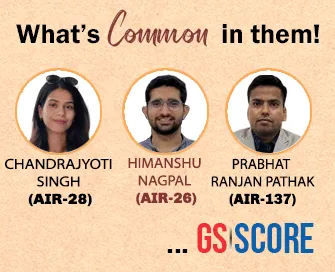
Editorials
Context
Concerns over India's over-dependence on foreign-funded air quality research, coupled with recent disruptions in global climate data networks (e.g., under the Trump administration in the US), have reignited the debate on the need for self-reliance (Atmanirbharta) in India’s air pollution strategy.
Existing Gaps in India's Air Quality Management
- Overdependence on Foreign Initiatives: Several studies on India’s air pollution are funded and led by foreign entities, despite being conducted on Indian soil using Indian talent and infrastructure.
- Underutilisation of Domestic Resources: Pollution Control Boards regularly return unspent funds, and many Indian institutions fail to lead despite being well-funded and capable.
- Unequal Research Ecosystem: Most foreign collaborations and funding are channelled to elite institutions, marginalising broader national capacity building.
Missed Opportunities Despite Indigenous Capacity
- Indigenous Initiatives with Limited Reach: India’s SAFAR system (2010) was a scientific breakthrough but remained confined to just four cities.
- Strong Domestic Institutions: Agencies like IMD and ESSO are world-class, yet coordination with CPCB and state agencies remains inadequate.
- Policy versus Practice Gaps: Despite schemes like Make in India, scientific self-reliance in air quality data, monitoring, and forecasting has not materialised at scale.
Way Forward – Towards Atmanirbhar Air Quality Strategy
- Creation of Unified Resource Framework: NARFI (National Air Quality Resource Framework of India) is proposed as a collaborative, evidence-based, and interdisciplinary knowledge platform.
- Need for Airshed-Based Approach: Moving beyond city-specific models, India must adopt a regionally-integrated airshed management system, using fine-gridded emissions data.
- Health and Food Security Centric Strategy: Future policy must integrate air quality with public health and food production goals to build a robust, autonomous environmental strategy.
Practice Question
Q. India's air pollution crisis cannot be solved without achieving scientific and institutional atmanirbharta. Critically examine the existing limitations and suggest a roadmap for an indigenous, data-driven, and health-centric air quality management strategy.


